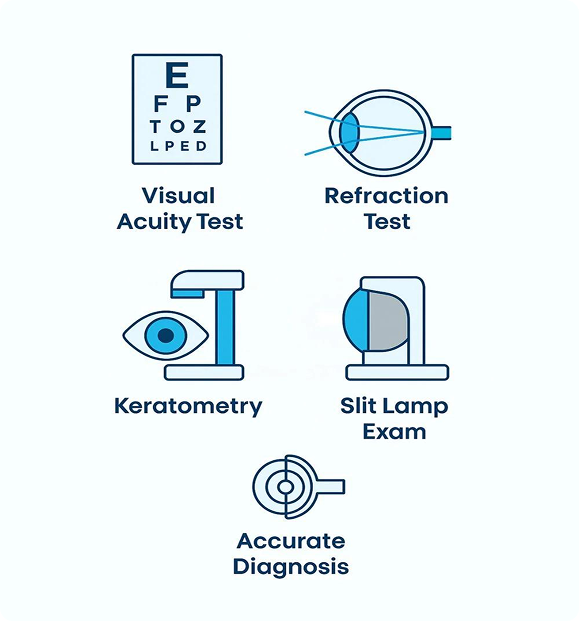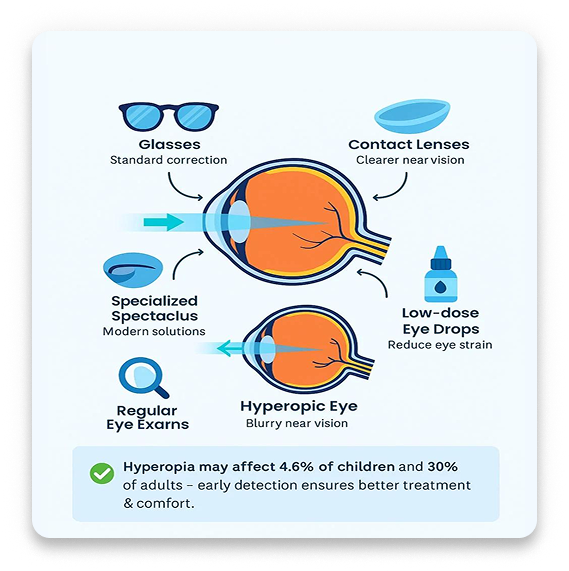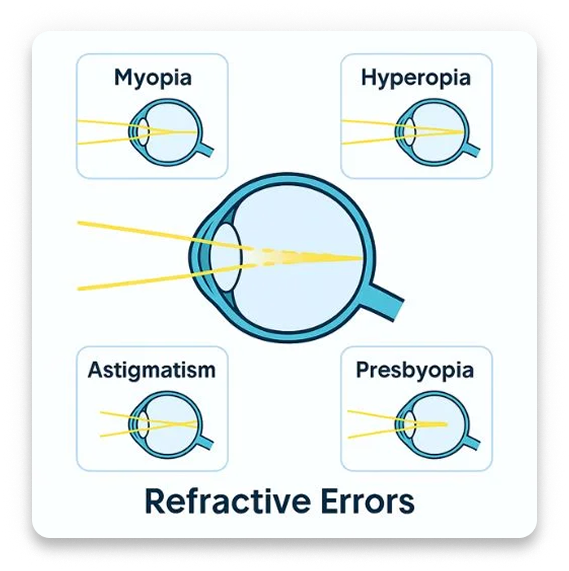What is Astigmatism?
Astigmatism is a common refractive error that affects how light enters your eye, causing blurred vision at all distances. Learn about this treatable condition.
Instead of a smooth, round shape like a basketball, the eye’s surface is more like a football, causing light to focus on multiple points. Symptoms can include headaches, eye strain, and difficulty seeing at night.


Types of Astigmatism
Comprehensive care for all vision correction needs
Corneal Astigmatism
- The most common type, caused by an irregular shape of the cornea the clear front part of your eye. Instead of being round like a baseball, it's shaped more like a football.
Lenticular Astigmatism
- Caused by an irregular shape of the lens inside your eye. This type is often associated with cataracts and may require different treatment approaches.
Combined Astigmatism
- Some people have both corneal and lenticular astigmatism, requiring comprehensive evaluation and customized treatment plans for optimal vision correction.
What Causes Astigmatism
Understanding the causes of astigmatism can help you make informed decisions about prevention and treatment options.
Hereditary (Most Common)
- Astigmatism is usually passed down from biological parents to their children through genetics.
Eyelid Pressure
- Excessive pressure from eyelids on the cornea can contribute to astigmatism development.
Eye Injuries
- Trauma to the eye can alter the shape of the cornea, leading to astigmatism.
Keratoconus
- A progressive eye disease that causes the cornea to thin and bulge into a cone shape.
Surgery Complications
- Rarely, complications from previous eye surgeries can result in astigmatism.
Astigmatism Symptoms
Recognizing the signs of astigmatism is the first step toward clearer vision. These symptoms can affect your daily activities and quality of life.
Blurred Vision
Difficulty seeing details clearly at any distance, both near and far objects appear fuzzy.
Light Sensitivity
Seeing glare or halos around lights, especially at night or in bright conditions.
Squinting
Frequent squinting to try to see more clearly, which can lead to facial muscle tension.
Headaches
Regular headaches caused by eye strain from trying to focus with an irregular eye shape.
Eye Fatigue
Feeling like your eyes are constantly working too hard to see, leading to tiredness.
Eye Strain
Discomfort or pain in and around the eyes, especially during prolonged visual tasks.
How We Diagnose & Treat
- Diagnostic Tests
Visual Acuity Test
Refraction Test
Keratometry
Slit Lamp Exam


Comprehensive Exam
- Complete eye health evaluation including inside your eyes
Precise Measurements
- Advanced tools measure exact corneal curvature and vision
Accurate Diagnosis
- Multiple tests ensure complete understanding of your condition
Recommended Eye Exam Schedule
Multiple effective treatments are available to correct astigmatism and restore clear vision. Our specialists will recommend the best option based on your specific needs.
Children
Pediatrician should check eyes at every well-child visit until school age, then every 1-2 years.
Adults Under 40
Every 5-10 years for comprehensive eye examinations.
Adults 40-54
Every 2-4 years as age-related changes become more common.
Adults Over 55
Every 1-3 years for early detection of age-related conditions.
Prevention & Risk Factor
Multiple effective treatments are available to correct astigmatism and restore clear vision. Our specialists will recommend the best option based on your specific needs.
Hereditary Nature
If you have astigmatism or another type of refractive error, there's a chance your children might have it as well.
Cannot Be Prevented
You cannot prevent astigmatism. Most people who have astigmatism are born with it, while others develop it as their eyes grow and change throughout their lives.
Early Detection is Key
Regular eye exams can help identify problems right away, allowing for prompt treatment to prevent vision complications.
Family Monitoring
If you have astigmatism, monitor your children for symptoms and ensure they receive regular eye examinations.
Outlook & Prognosis
The prognosis for astigmatism is excellent with many effective treatment options available for clear, comfortable vision.
Mild Astigmatism
- If you have a small degree that doesn't affect your vision, you might not need any treatment. Regular monitoring ensures any changes are caught early.
Significant Astigmatism
- Many effective treatment options available. Most people with astigmatism only need glasses or contact lenses for clear vision.
Surgical Correction
- Most people who have vision correction surgery have permanently improved vision. Some may need enhancement procedures as they age.


